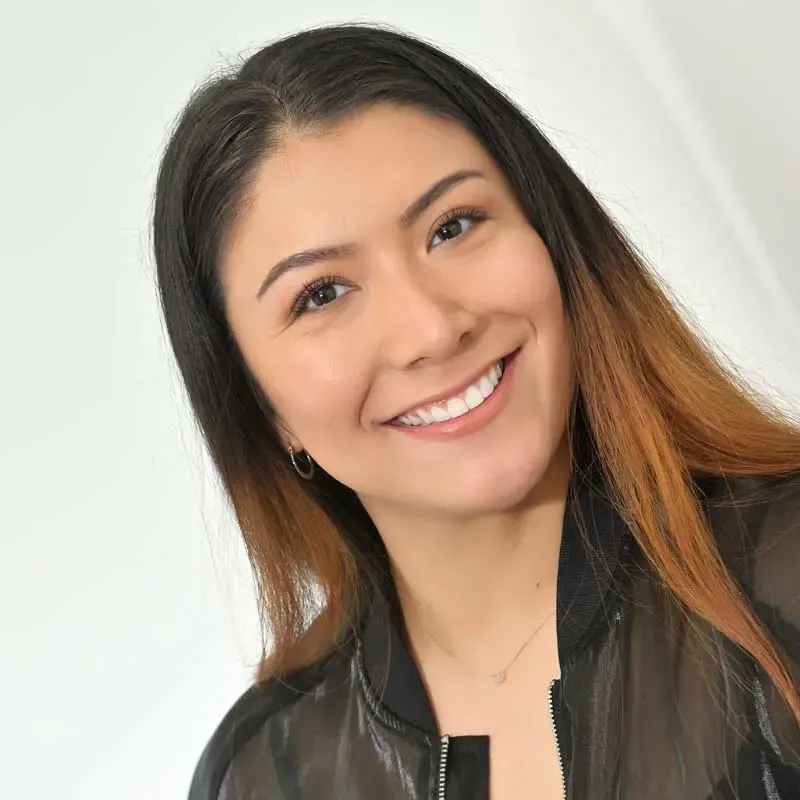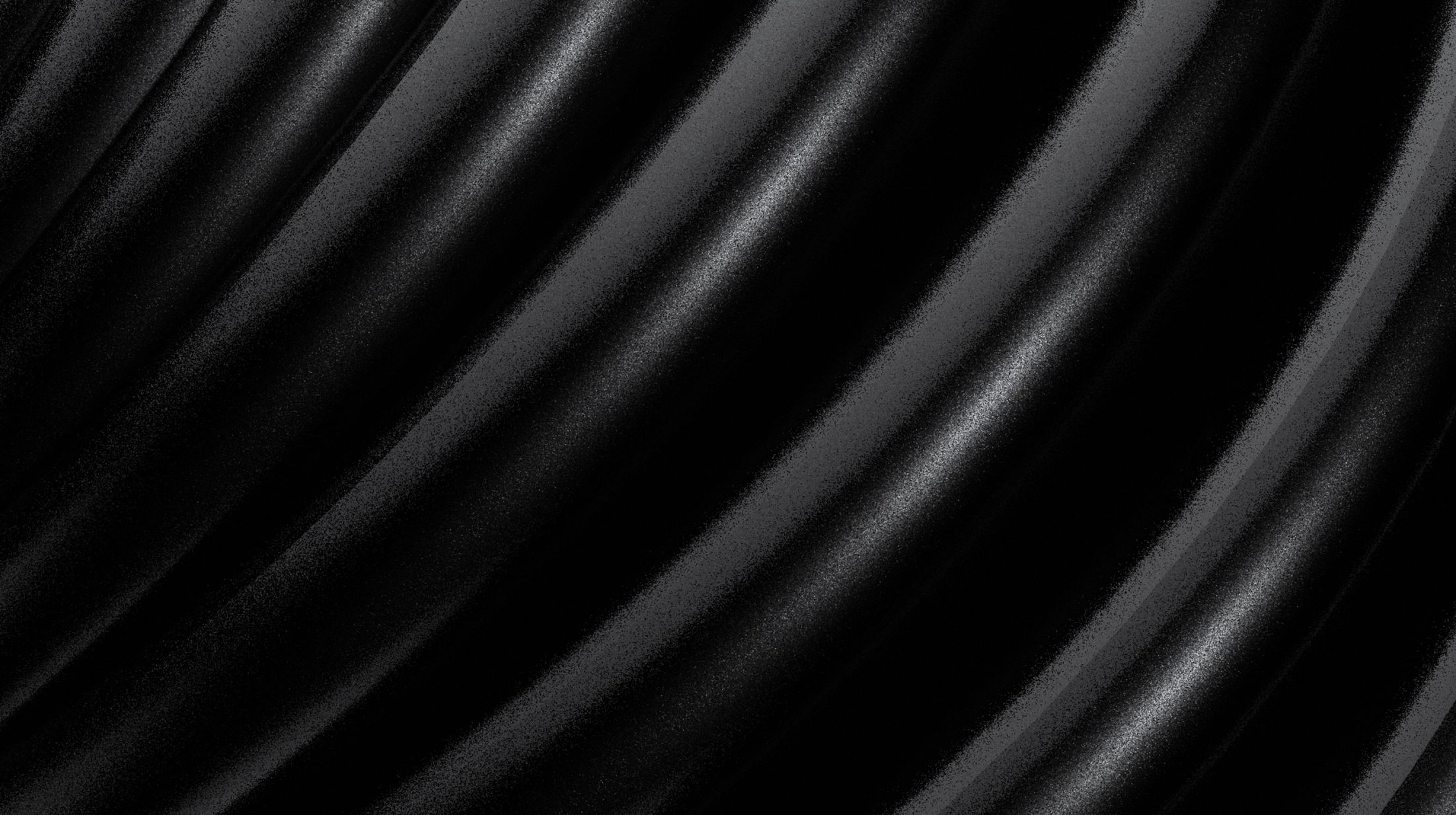

Skin Resurfacing
In Houston
About Skin Resurfacing – What is skin resurfacing?
Skin resurfacing is the process of:
- Improving skin quality
- Improving skin texture
- Reducing fine lines and wrinkles
- Improving skin plumpness and volume and stimulating collagen
- Restoring the skin to the characteristics of young skin
Achieving these goals involves stripping away layers of skin in a controlled fashion. At our office in Houston skin resurfacing is a broad category and encompasses a multitude of procedures to achieve these goals.
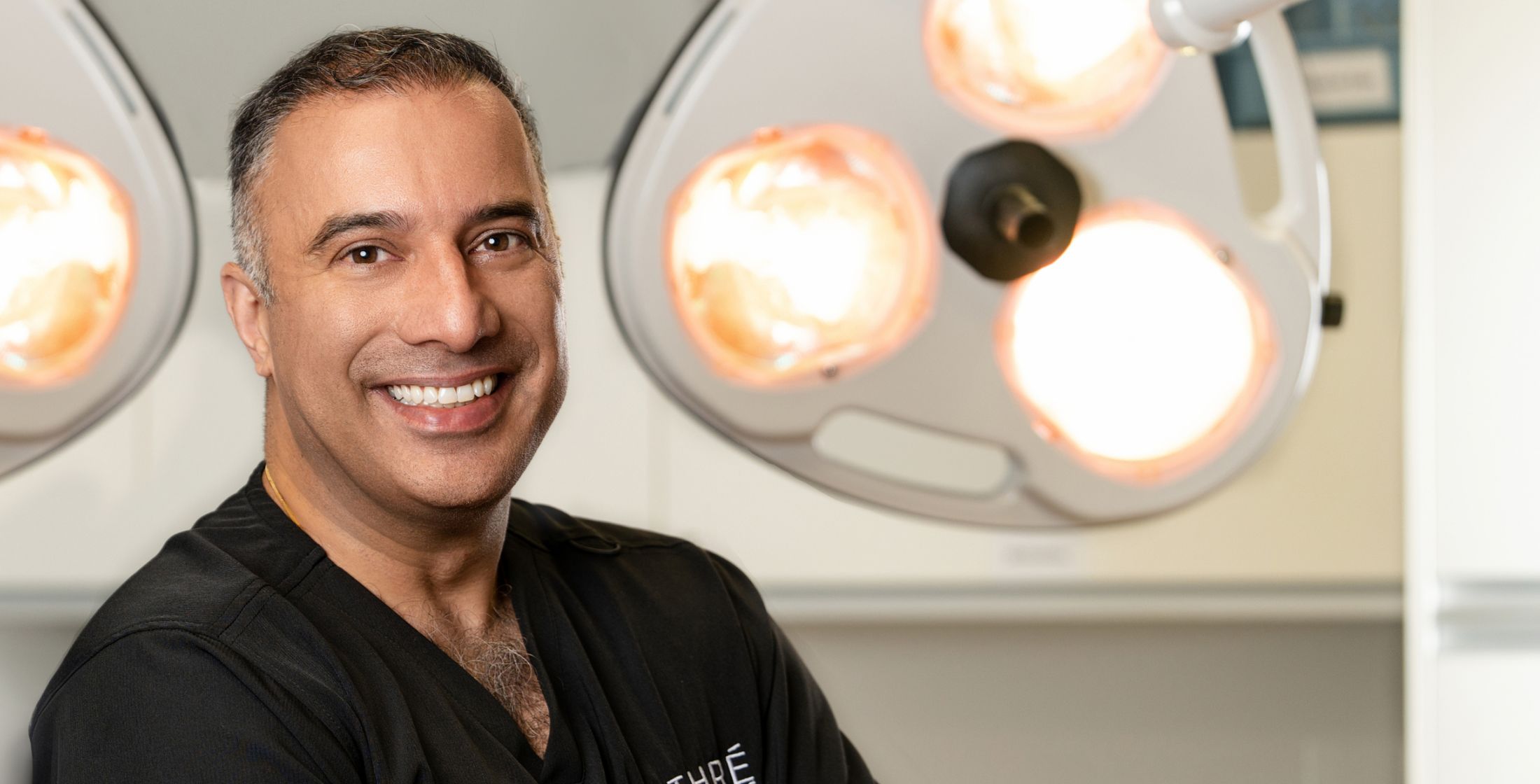
Refresh and brighten your skin with professional skin resurfacing treatments and peels at Houston-area Athré Facial Plastics. If you’re unhappy with the look or texture of your skin, and want a softer, more supple look, we can help.
1 of 14
Skin Resurfacing Before & Afters
Science behind skin resurfacing
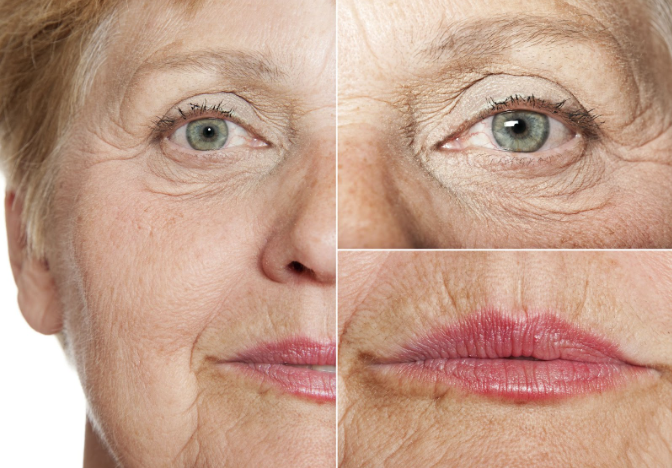
The above photo shows how the fine lines and skin textural changes develop over the face.
Skin resurfacing removes layers of skin in a controlled fashion. By removing layers, the underlying cells in the dermis are stimulated to create new skin, increase collagen production, increase elastin production to reveal smoother, plumper skin, reduction in fine lines, and reduction in wrinkles.
The deeper the depth of the resurfacing, the more skin regeneration is created, and the more drastic results are seen.
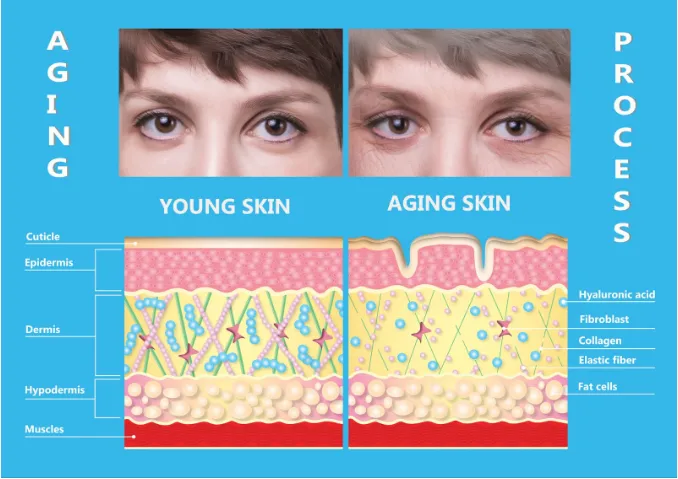
As skin ages, the collagen and elastin that help support the skin start to break down.
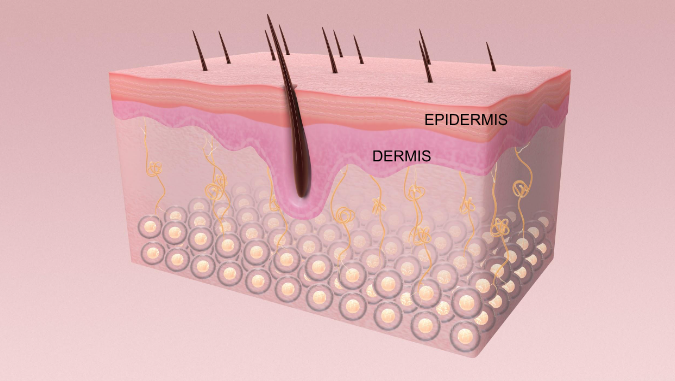
The skin is composed of layers. The most superficial layer is the epidermis. Underneath the epidermis is the dermis. Beneath that are the connective structures that support the skin.
Types of Resurfacing Treatments
There are four main types of skin resurfacing treatments offered at Athre Facial Plastics.
- Microneedling
- Dermabrasion
- Chemical peels
- Laser resurfacing
All four of these types of resurfacing have their own individual benefits, and can be tailored to the patient’s needs and skin conditions. Furthermore, each of Houston skin resurfacing treatments can be modulated to different depths to achieve different results.
Microneedling
Microneedling is the process of making tiny microperforations in the outermost layer of skin. A special instrument is used that has hundreds of extremely fine needles. These needles are used to create small perforations in the skin. Though this is not technically a resurfacing procedure, microneedling is used to change the texture of the skin and reduce fine lines and wrinkles.
Many spas in Houston, TX also offer microneedling. The difference between Spa-level microneedling and plastic surgeon level microneedling is the depth of penetration of the needles. Spa technicians microneedle to a depth of approximately 1.5 mm (millimeters). Our usual depth of penetration is 2 mm.
Microneedling can be thought of as similar to lawn aeration. When you create holes in the lawn, you allow nutrients to reach the roots of the turf. To further enhance the effect of microneedling, chemicals and medicines can be added while the microperforations are open to enhance skin rejuvenation. A stem cell facial performed by Dr. Athre involves using microneedling and your own adipose (Fat cell) derived stem cells to enhance the regenerative property of skin.
Microneedling by itself helps with skin rejuvenation by creating small micro-injuries in the skin. These micro-injuries trigger the body’s inflammatory system to heal these micro-injuries. That process helps with collagen and elastin regeneration which helps with skin texture and plumpness.
Dermabrasion
Dermabrasion is the process of mechanically sanding skin. Medical spas use microdermabrasion which is a machine that emits sand or some other abrasive agent at a high pressure to strip away the most superficial layer of epidermis.
Dermabrasion uses a machine that spins at a high RPM connected to a diamond wheel to sand the skin. The dermabrasion instrument can only be used by surgeon because the dermabrasion machine can be very aggressive if the user does not appreciate the power of the machine. The target depth for dermabrasion is into the superficial dermis.
Dermabrasion is the gold standard treatment for treatment of scars, and acne scars. Dermabrasion sands the heaped up scar down to the flat surface of the surrounding skin to achieve smooth, homogenous level. Dermabrasion can also be used superficially to sand the superficial level of the skin to achieve wrinkle reduction by triggering increased collagen and elastin growth and remodeling.
Click here to see a video on how dermabrasion is done.
Chemical Peel
Chemical peels have been around since ancient times. Queen Cleopatra herself used to bathe in soured milk to keep her complexion smooth and vibrant. As disgusting as that sounds, soured milk is lactic acid, an alpha hydroxy acid!
Chemical peels use acids to dissolve the outer layer of skin. The strength of the acid as well as the time it is kept on the skin will determine the depth of penetration. Chemical peels are classified as mild, moderate and deep indicating how deep the peel is supposed to act. Examples of types of chemical peels include: alpha hydroxy acids, salicylic acid, glycolic acid, TCA (Tri-chloro-acetic acid), and Phenol/Gordon-Baker peels.
In a chemical peel procedure, Dr. Athre will apply the peeling solution to various target treatment areas of the face. Chemical peels can also be used in the decolletage and the back of the hands to combat the signs of aging. After the peel has penetrated to an appropriate depth, the peeling solution is neutralized.
Alpha hydroxy acid, Salicylic acid, and Glycolic acids are usually mild peels. TCA peels usually are moderate depth peels, and Phenol and Croton Oil peels are usually deep peels. This is an approximation and some TCA peels can be deep peels based on concentration and the time the acid is left on the skin.
Mild chemical peels may offer a brightening effect, whereas deep chemical peels can truly resurface skin, reduce wrinkles, tighten skin, and provide a rejuvenated appearance. Much like everything else in plastic surgery, chemical peels are an art form. They are provider dependent and require extensive experience to become proficient.
Click here to learn more about chemical peels.
Laser Resurfacing
Laser skin resurfacing is the use of a laser to selectively remove layers of skin. The most common types of lasers used for this purpose are: CO2 and Erbium. In both of these cases, the laser is used to remove areas of damaged or wrinkled skin, layer by layer.
Laser skin resurfacing is most commonly used to minimize the appearance of wrinkles and lines, especially near the mouth and the eyes. However, it is also one of the best ways to treat facial scars or areas of uneven pigmentation and precancerous lesions.
Laser resurfacing is performed using a beam of laser energy which vaporizes the upper layers of damaged skin at specific and controlled levels of penetration. Laser resurfacing may offer a number of advantages over other resurfacing methods, namely, precision, little (if any) bleeding, and less postoperative discomfort. Many people who have had a facelift maintain the results of their surgery with laser treatments.
Many patients have heard about Fraxel Laser. Fraxel laser is short-form for fractionated laser. Fractionated laser or Fraxel IS NOT A DIFFERENT TYPE OF LASER. It is a mode of delivering the laser beam. If you think of the laser beam as the water coming out of a garden hose, the normal or full ablative mode of the laser is opening the garden hose. Now imagine you have a nozzle on the garden hose that breaks the stream of water into multiple small streams. That is how a fractionated laser works.
Laser resurfacing may be performed on the whole face or in specific treatment areas. Often, Dr. Athré performs the procedure in conjunction with another cosmetic operation, such as eyelid surgery or a facelift.
Why Dr. Athre for Skin Resurfacing in Houston, TX?
Dr. Athre provides surgical skin resurfacing in Houston, TX. This is important In today’s environment where laser procedures and other skin resurfacing procedures are commonly done at spas and salons.
All of these modalities can be performed at mild levels, which is performed at most Med spas, or at deeper levels to achieve dramatic results. Some of these treatment modalities such as dermabrasion and chemical peels are older treatment modalities. However, they still can provide amazing results in the carefully selected patient.
It requires a plastic surgeon like Dr. Athre with the experience and know how to diagnose all of your existing skin conditions and characteristics and treat your skin with appropriate modalities to achieve the desired results. Dr. Athré has performed countless cases using many different types of lasers and peels on many different types of skin. His training as an aesthetic facial plastic surgeon allows him to tailor each procedure to the patient’s individual needs, skin type, skin color, and skin texture.
Skin Resurfacing
Frequently asked Questions
A skin resurfacing procedure costs anywhere from $50 to $2,500.
After skin resurfacing Houston patients typically have a recovery time of 5 to 8 days.
No aesthetic treatment of the face is permanent. However, skin resurfacing encourages new, fresh growth of collagen (i.e., a sort of “blank slate”). The results are permanent but aging will continue to occur.
Skin resurfacing causes little to no pain, especially with the application of a topical anesthetic.
Client Testimonial
“Wonderful bedside manner, great experience from start till finish. Dr. Athre is very confident puts you at ease, tells you exactly what will take place and is excellent at what he does. Has an eye for what will work best for you and just is the best experience and best results I have had.”
